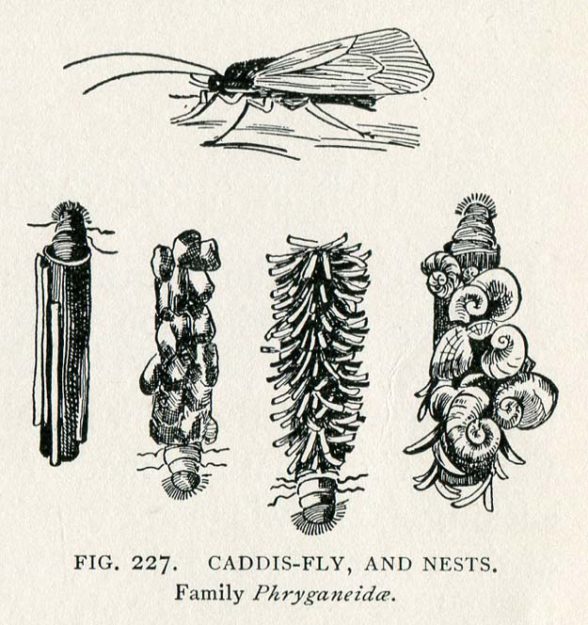Belle S. Cragin, Our Insect Friend and Foes, New York, G.P. Putnam’s Sons, 1899, p. 296-297.
The larvae are called Caddis-worms, Cad-bait, Case-worms, and various cases made by the different species for their homes. The material used are grains of sand or gravel, shells, tiny sticks, straws, bits of moss, dried grass-stalks, leaves, or roots, lined and fastened together with silk. Generally, the sticks or straws are laid lengthwise, but sometimes crosswise, or even endwise, sticking out in every direction. The shape is commonly like a tube, sometimes spiral and in some cases tapering to a point like a slender cone. ../.. The Caddis-worm builds his house to fit himself. He can hide completely within it, or he can stick out his head and long front legs and drag it around with him as he crawls along the bed of the brook, and up and down the stems of water-plants.
